
Tiny Home Regulations in Arizona: The Complete Guide
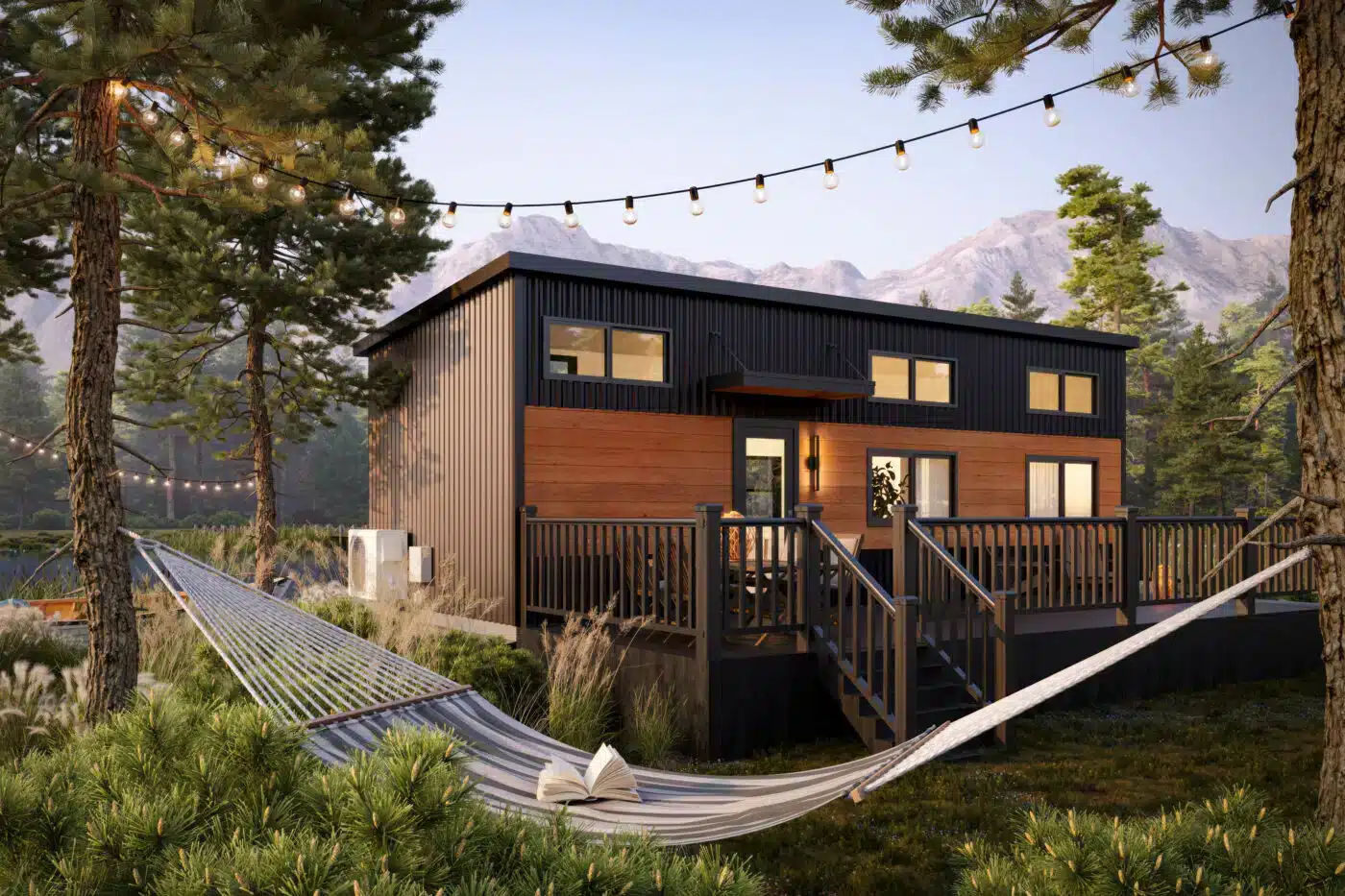
For many folks in Arizona, Tiny home living is their preferred choice for enjoying a sustainable lifestyle without sacrificing modern comforts. Yet, many questions questions still remain when considering such a decision. What is classified as a tiny home? What are the Arizona tiny house laws? Are Tiny Homes & Park Models Homes considered the same thing? We’ll be answering those questions & more in the blog!
A dwelling that is smaller than 400 square feet is referred to as a tiny house in Arizona. Tiny houses on wheels belong under the category of mobile homes, which have a minimum floor area of 160 square feet (Appendix Q). Small dwellings are allowed in detached single-family, multifamily, and auxiliary dwelling unit (ADU) zones in Arizona due to the state’s lenient zoning regulations.
However, the exact Arizona tiny home laws, codes, & regulations vary in each county and town of Arizona.
Are Park Models the Same Thing As Tiny Homes?
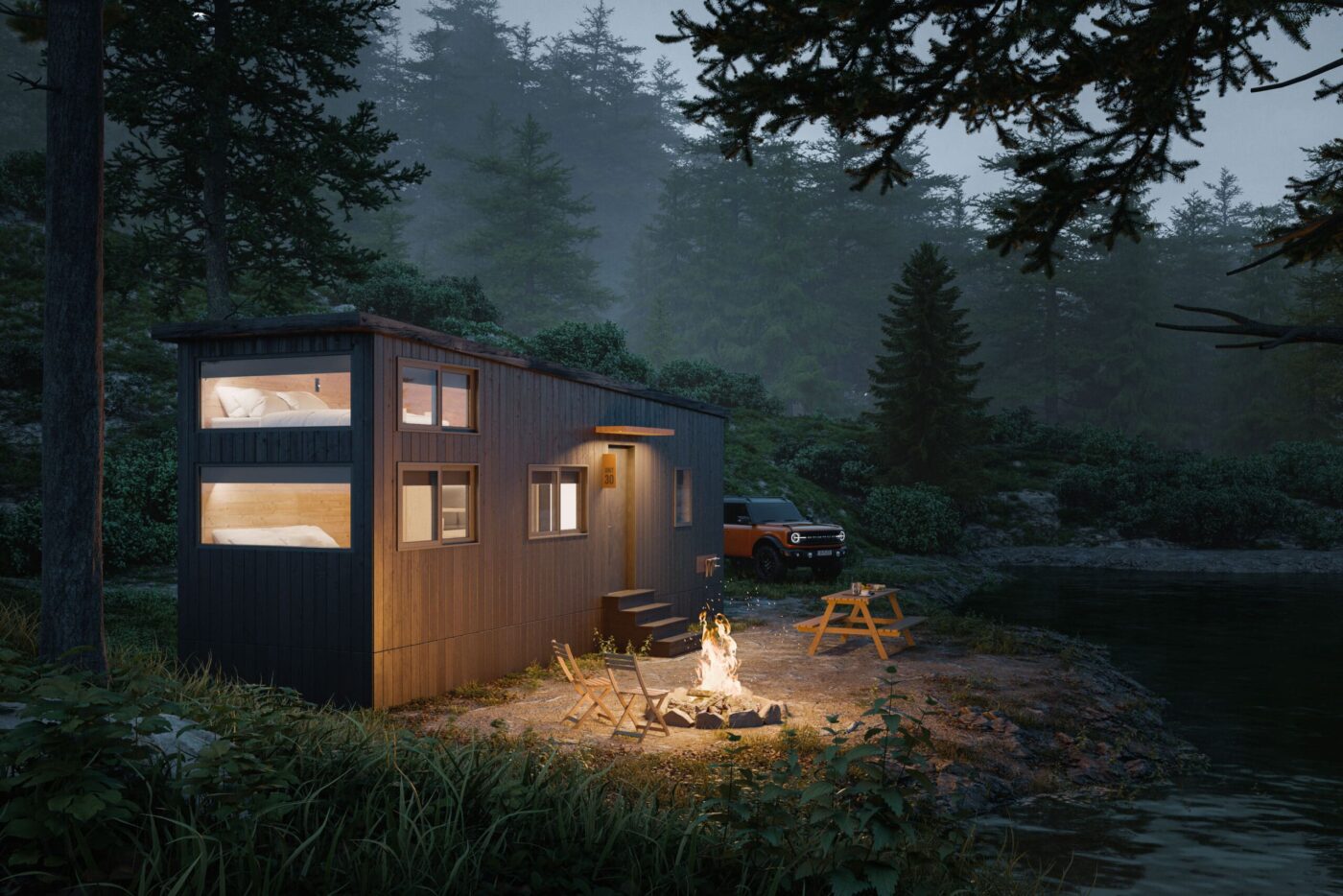
Yes. Park Models are Tiny Homes. However, park-model tiny homes are on wheels and are built to the RVIA 119.5 standard. Because they are on wheels, some areas of Arizona may view this as a non-permanent structure and may not allow you to have them as a full-time residence. Yet, there are many RV communities in Arizona that allow you to keep your tiny home in an RV community full-time.
Something else to keep in mind about tiny homes is that there are multiple certifications for them. For example, at Zook Cabins, all of our park-model tiny homes are built to RVIA standards. However there is another popular certification available known as NOAH. To learn more about these two different but most common designations, check out our blog RVIA VS NOAH Tiny Homes.
What Counties in AZ Allow Tiny Homes?
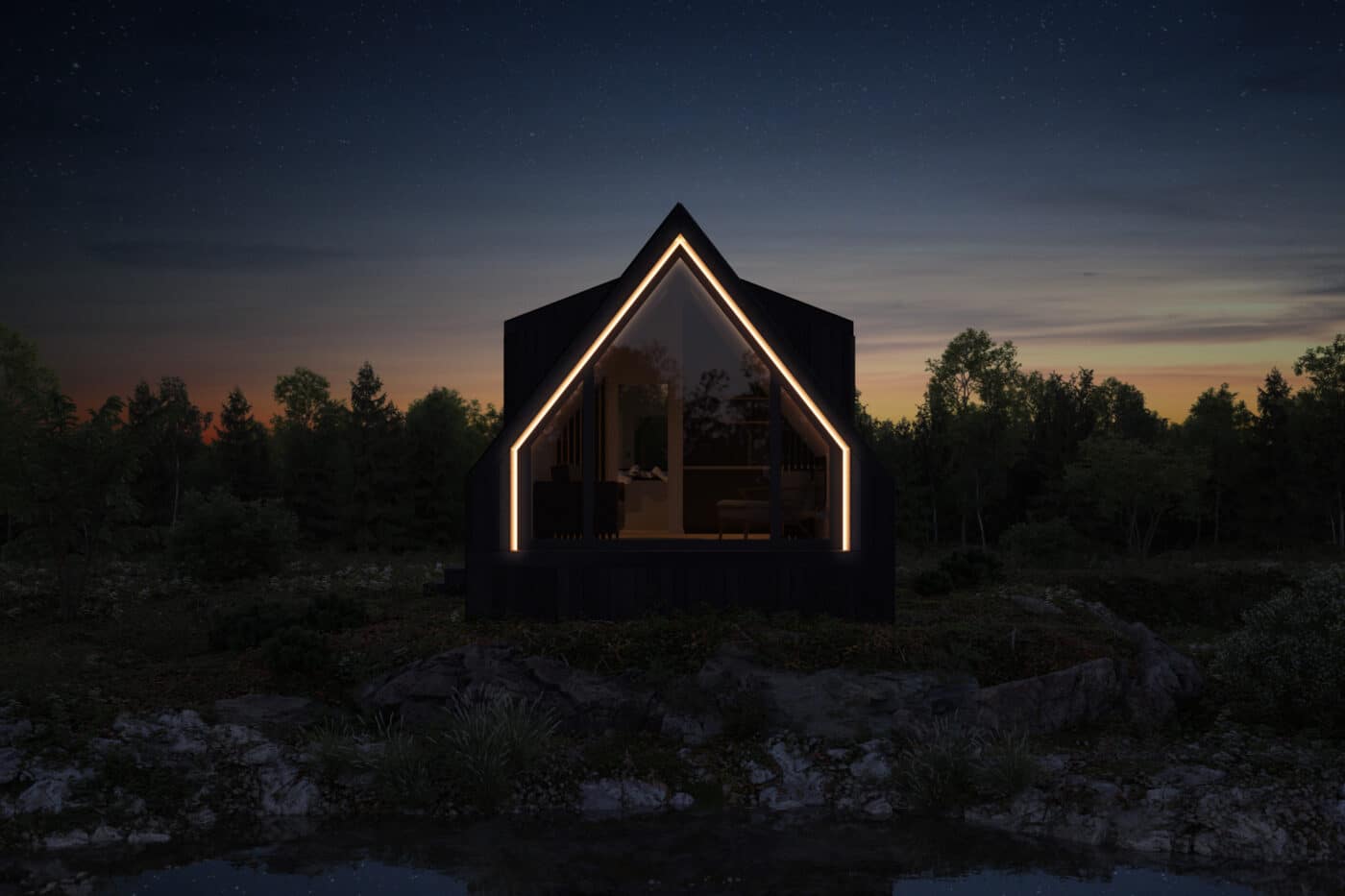
All counties in Arizona allow tiny homes! Although, some may have different or more strict rules & regulations. Below is a list of all the counties & their regulations on tiny homes. Make sure to also double check with your city/towns zoning ordinance, as the laws & rules vary from each city/town. Click on the county name to learn about the laws & regulations in that area!
Does Cochise County, AZ Allow Tiny Homes?
Yes, the county now follows Appendix Q (Tiny Homes) of the 2018 International Residential Code (IRC). According to local laws & regulations, tiny homes must have a minimum size of 296 square feet with the ceiling height being a minimum of 6 ‘4″. All tiny homes must have building permits and pass inspections to receive a certificate of occupancy.
Does Coconino County, AZ Allow Tiny Homes?
Yes, Coconino county has also adopted the 2018 International Building Code, Coconino County Community Development defines a tiny house as any home smaller than 600 square feet. The tiny home also must be at least 6’4” in ceiling height. The home must pass inspections & receive building permits to obtain a certificate of occupancy. These homes can be site-built, partially site-built, or placed on an approved trailer.
Does Gila County, AZ Allow Tiny Homes?
Yes, Gila county allows construction & habitation of tiny homes as long as it follows building codes & zoning regulations. The maximum size for a tiny home in Gila county is 500 square feet with the ceiling height being at least 6’4” or higher. Before being allowed to reside in your house, the home must pass all the inspections & receive the necessary building permits so you could obtain a certificate of occupancy. It’s advised to check with the Gila county Community Development department for up to date information regarding specific laws & regulations.
Does Graham County, AZ Allow Tiny Homes?
Yes, tiny homes in Graham county must follow the rules & regulations stated in the International Residential Code (IRC), similar to most counties in Arizona. The maximum size for a tiny home in Graham County is generally 400 square feet with 6’4” being the minimum ceiling height. Like most of the states, to receive a certificate of occupancy, the home needs to pass the inspections & obtain building permits. For the most up to date information regarding tiny homes in Graham county contact Graham County Planning & Zoning Department.
Does Greenlee County, AZ Allow Tiny Homes?
Yes, Greenlee county also mandates the International Residential Code (IRC). Meaning, tiny homes in Greenlee county could be up to 400 square feet & at least 6’4” in ceiling height, it must also follow the building codes & inspection rules to be able to obtain the certificate of occupancy. For more information or questions, contact the Greenlee County Planning & zoning department as they can provide a more detailed description on permits, zoning, & regulations.
Does Laz Paz County, AZ Allow Tiny Homes?
Yes, Laz Pac county does allow tiny homes. Tiny homes have to follow the state’s regulations in Arizona, which state that tiny homes should be between 200-400 square feet along with a minimum ceiling height of 6’4”. Laz Paz county also adheres to the International Residential Code, so to obtain the certificate of occupancy, you must acquire a building permit & pass the inspection! But, it’s still important to double check the local zoning & permits laws with the local Planning & Zoning department.
Does Maricopa County, AZ Allow Tiny Homes?
Yes, like many of the counties in Arizona, Maricopa states that tiny homes must follow the International Residential Code (IRC). Tiny Homes must be 200-400 square feet. They require a certificate of occupancy, proper insulation and a minimum ceiling height of 6’4”. You must pass all the inspections and acquire the building permits to be able to finish the process & obtain the certificate of occupancy.
Does Mohave County, AZ Allow Tiny Homes?
Yes, Mohave county also allows tiny homes. Mohave county state’s Tiny homes must be at least 170 square feet in size, with the ceiling height of 6’4” or more. Like all the other states, tiny homes in Mohave County must have all the necessary permits & must pass all inspections to acquire the certificate of occupancy.
Does Navajo County, AZ Allow Tiny Homes?
Yes, tiny homes in Navajo County must adhere to the International Residential Code (IRC). The requirements include a ceiling height of at least 6’4” with the home being at least 200 square feet in size. For the home to be inhabitable it must pass inspection & receive the necessary permits. Once this requirement is met you will receive a certificate of occupancy.
Does Pima County, AZ Allow Tiny Homes?
Yes, Pima county allows tiny homes as long the house follows the rules & regulations of the International Residential Code (IRC). The tiny homes must have a minimum of 200 square feet & maximum of 400 square feet of living space. The home must have a certificate of occupancy which is obtained by passing all inspections & acquiring a building permit.
Does Pinal County, AZ Allow Tiny Homes?
Yes. Tiny Homes in Pinal county also must follow the International Residential Code (IRC). Tiny homes must have a minimum ceiling height of 6’4” and a minimum of 200 square feet of living space. Tiny homes must obtain necessary permits & pass inspection to receive a Certificate of Occupancy.
Does Santa Cruz County, AZ Allow Tiny Homes?
Yes. All tiny homes in Santa Cruz must be at least 200 square feet, with a minimum ceiling height of 6’4”. Tiny Homes in Santa Cruz also must adhere to the International Residential Code (IRC) Meaning all tiny homes must pass inspections & have all the necessary permits so it could receive a certificate of occupancy.
Does Yavapai County, AZ Allow Tiny Homes?
Yes. Tiny Homes in Yavapai county must adhere to the International Residential Code. The home must be at least 200 square feet with a minimum ceiling height of 6’4”. The Tiny Home must pass all inspections & obtain a building permit to receive a Certificate of Occupancy.
Does Yuma County, AZ Allow Tiny Homes?
Yes. Like all the previous counties, Yuma county does allow tiny homes as well. The tiny home must be a minimum of 200 square feet and at least 6’4” in ceiling height. For the tiny home to be approved for occupancy, it must have a Certificate of Occupancy which is obtained by passing all inspections & obtaining a building permit.
Find Your Tiny Home Regulations in AZ by City
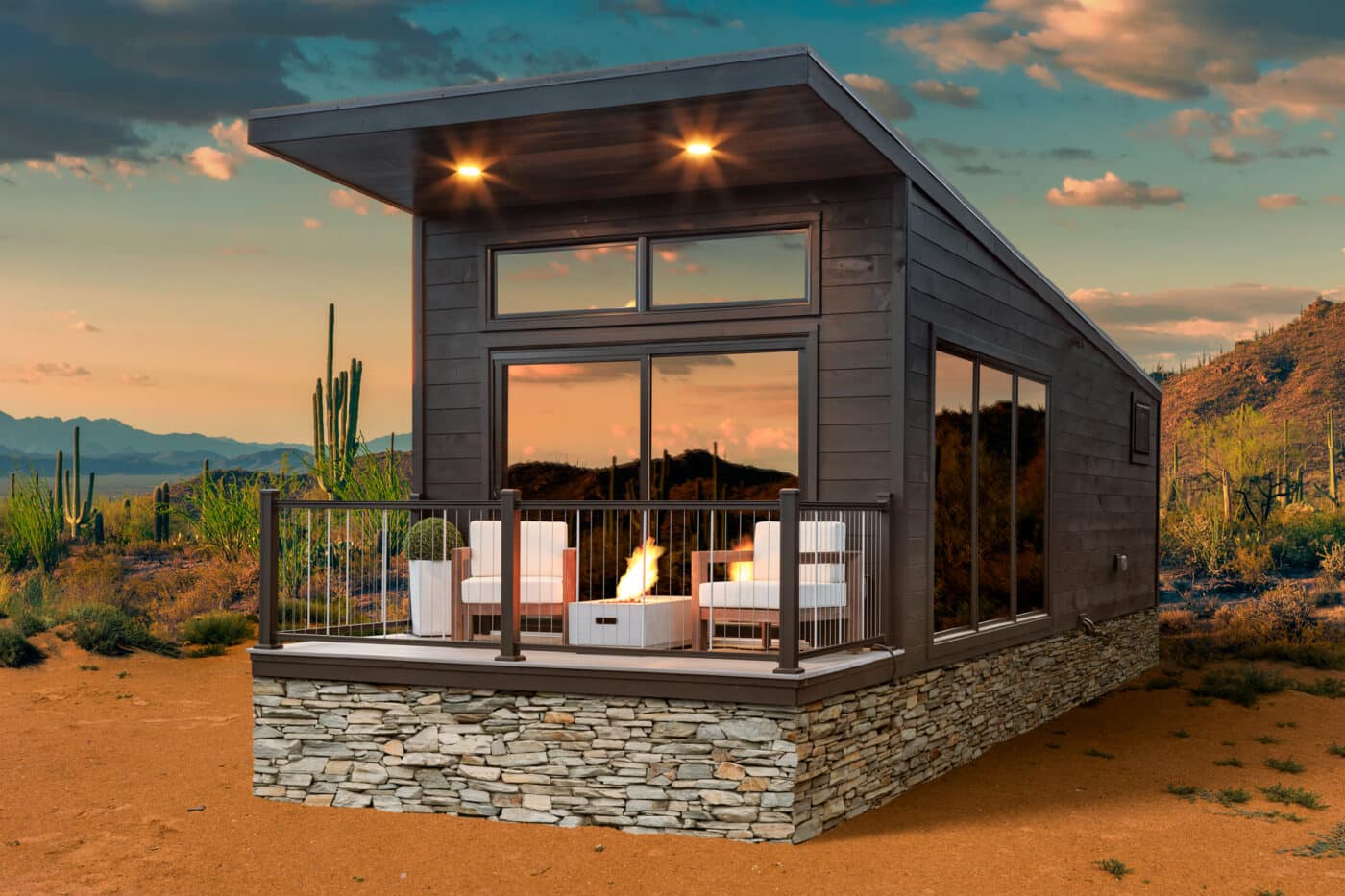
Click On One Of The Cities Below To Learn More About Their Laws & Regulations.
Does Phoenix, AZ Allow Tiny Homes?
Yes, Phoenix city does allow tiny homes. The home must be at least 200 square feet with a ceiling height of 6’4”. The Home must pass all inspections & obtain a building permit to be eligible for a certificate of occupancy.
Does Tucson, AZ, Allow Tiny Homes?
Yes, Tucson city allows tiny homes. The tiny homes must adhere to International Residential Code (IRC), meaning the home must be at least 200 square feet in size with a ceiling height of 6’4” or more. All tiny homes must have a building permit & pass inspection to be able to obtain a Certificate of Occupancy.
Does Mesa, AZ, Allow Tiny Homes?
Yes, the city of Mesa permits tiny homes. These homes must comply with the International Residential Code (IRC), requiring them to be at least 200 square feet with a minimum ceiling height of 6’4”. Additionally, all tiny homes must obtain a building permit, undergo an inspection, and secure a Certificate of Occupancy.
Does Chandler, AZ, Allow Tiny Homes?
Yes, as long as the home adheres to the International Residential Code (IRC). Which means that the tiny home must be at least 200 square feet in size with a minimum ceiling height of 6’4”. The tiny home must pass all inspections & acquire a building permit to secure a Certificate of Occupancy.
Does Gilbert, AZ, Allow Tiny Homes?
Yes, like the rest of the cities Gilbert does allow tiny homes. The tiny home must adhere to the International Residential Code (ICR), meaning it must be at least 200 square feet and a ceiling height of 6’4” at minimum. The tiny home must have a building permit obtained and all inspections must be passed to be approved for the Certificate of Occupancy.
Arizona Tiny House Laws
Can I live In a Park Model Home In AZ?
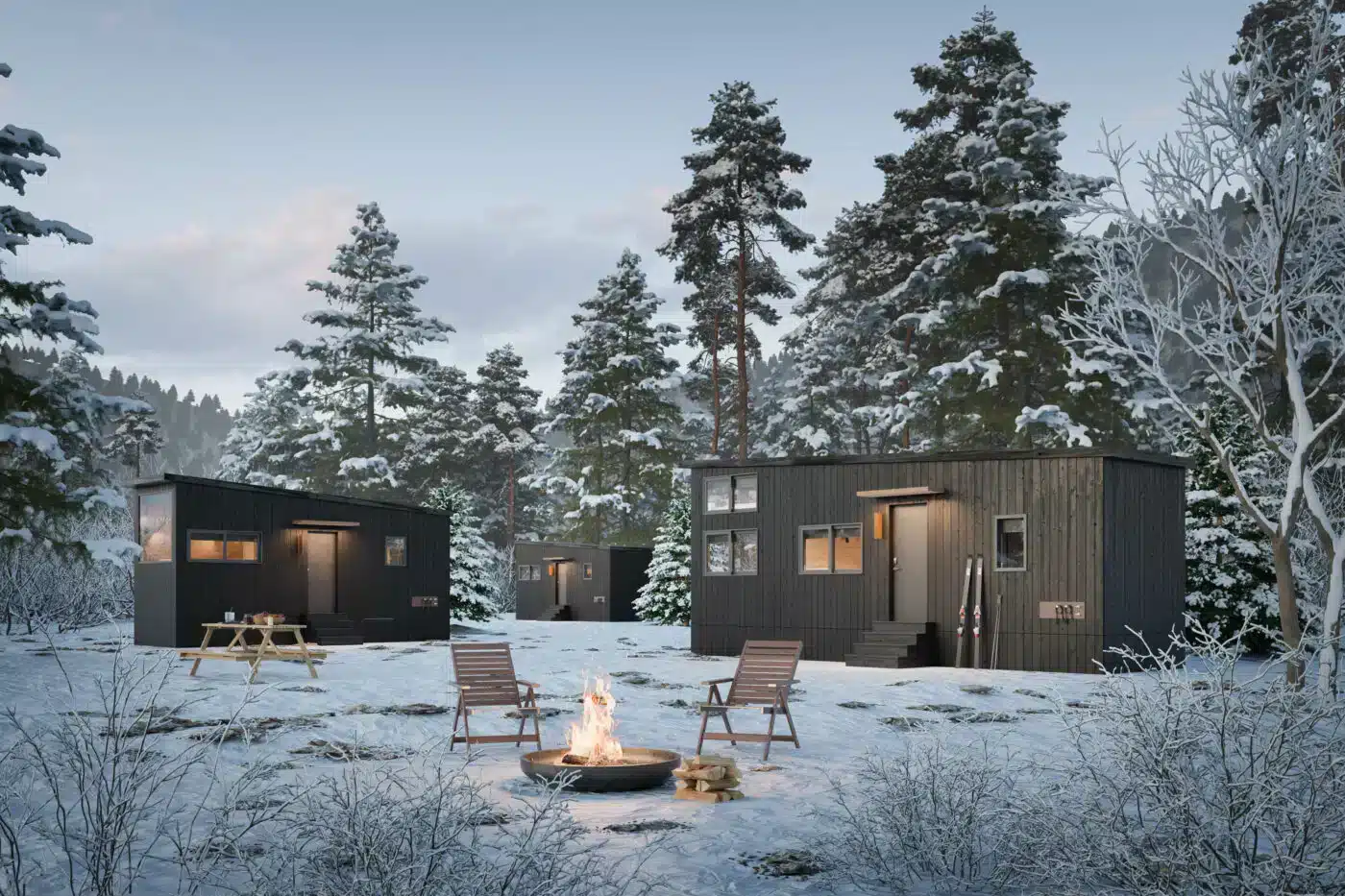
Yes you are allowed to live in a Park Model Home. Since our park model homes are classified as recreational vehicles (RV’s), you are eligible to reside in it full-time as long as it’s parked on a permanent foundation. With that being said, it’s still important to check with your local zoning department to make sure you are following the rules & regulations set in place.
- Zoning and Regulations: Make sure to check your local zoning ordinances & regulations, as some cities/counties have different rules for living in a Park Model Homes. Since Park Model Homes are considered as RVs, the rules & laws will be different compared to traditional homes.
- Permits: Since the Park Model Home is classified as an RV, you will need to register it & title it before being able to live in it or transport it. Also some counties or cities may require a building permit for the Park Model Home
- Inspection Requirements: Your Park Model Home may need to undergo inspections to be ready for occupancy. An inspector might check that the park Model Home meets all safety & building standards, including things such as: Electrical, plumbing, foundation and structural inspections.
- Utility Connections: Ensure that your Park Model Home can be properly connected to utilities such as water, electricity, and sewage. Some RV parks provide these connections, but if you’re placing your home on private land, you’ll need to make sure these services are available.
What Counties in AZ Do Not Allow Tiny Homes?
The state of Arizona allows tiny home since it has adopted the International Residential Code (IRC), so there is no information that states there are counties in Arizona that prohibit the use of tiny homes. More likely, it is expected that within some counties, zoning and building codes could be stricter in some areas than in others, thus making it more difficult to install or build a tiny home. As with all states, check with your local planning and zoning offices for the most accurate and detailed regulations in your area of interest.
General Notes to keep in mind
Building Codes: All tiny homes must be constructed to comply with International Residential Code (IRC) standards. This includes requirements for ceiling height, emergency exits, and proper insulation.
Zoning: Varies greatly. Some cities allow them as ADUs in single-family residential zones. Some may restrict them to areas such as RV parks.
Permits and Inspections: Inspection & permits are required for legal habitation; a Certificate of Occupancy is issued upon completion.
Are There Tiny Home Communities in AZ?
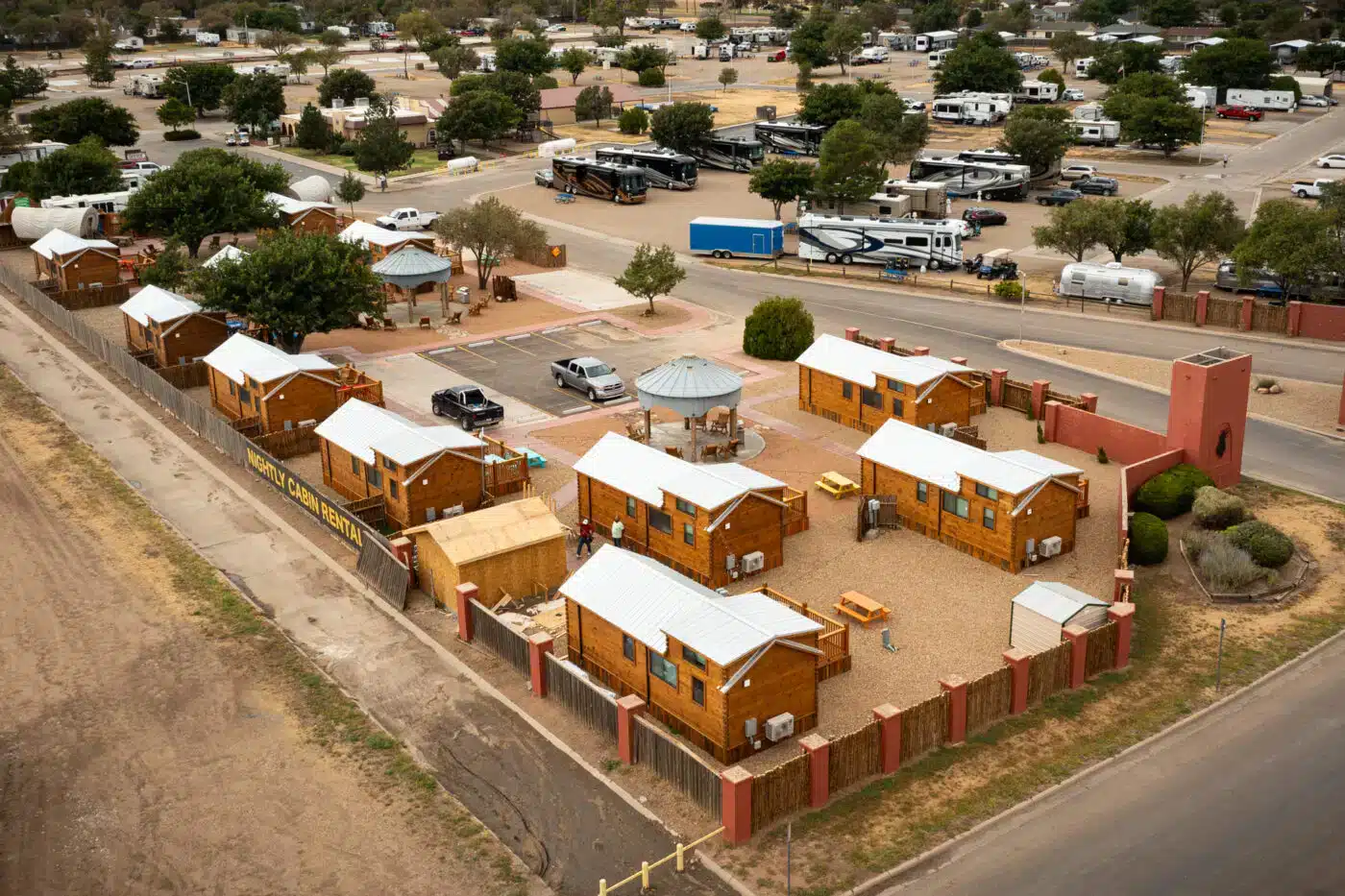
Yes, Arizona hosts several tiny home communities. Offering many amenities and settings, these communities make it easy for people who want to be a part of the tiny home life. Here are a few standouts:
Luxtiny Community
Location: Found at Lakeside, Arizona
Luxtiny is one of the most significant tiny home communities in Arizona. The community comes with a community garden, walking trails, and a communal space, making it an extraordinary cohesiveness and sustainable place.
Tiny Camp
Located: Sedona, Arizona
Tiny Camp is an eco-friendly community that rents tiny homes short-term. Nestled in the beautiful red rocks of Sedona, this community is all about sustainable living. It is a unique place for visitors who want to experience tiny living with beautiful surroundings & views.
Tiny House Village Flagstaff
Located: Flagstaff, Arizona
It’s a quiet spot but with an easy connection to nature and with many outdoor activities available. It’s perfect for those who value a tranquil setting and enjoy the wonders of the great outdoors.
Arizona RV & Park Model Home Parks
Various Locations: Throughout Arizona, many RV parks and campgrounds make space for Park Model Homes. Most provide community activities, and many of the amenities available to residents make them very convenient and well-suited for Park Model Home living. Examples: Rincon Country RV Resorts in Tucson, Verde Valley RV & Camping Resort in Cottonwood.
Benefits Of Living in the Communities:
Affordability: As it stands, tiny homes communities are much more affordable when viewed against the cost of living in a big city; this makes them an economically viable option.
Sustainability: A majority of the communities hold a focus on living sustainably, which will encourage measures such as the use of renewable energy, community gardens, & overall a simpler way of living that results in environment-friendly lifestyles.
Community Living: Tiny home communities offer support for those not wanting to live all alone, shared spaces to socialize and engage in outdoor activities will help keep you stay active & enjoy the beautiful community.
Simplicity: Living in a Park Model Home promotes a more simplified life by reducing clutter and fostering basic living, all resulting in a life with less stress but more fulfillment.
FAQs
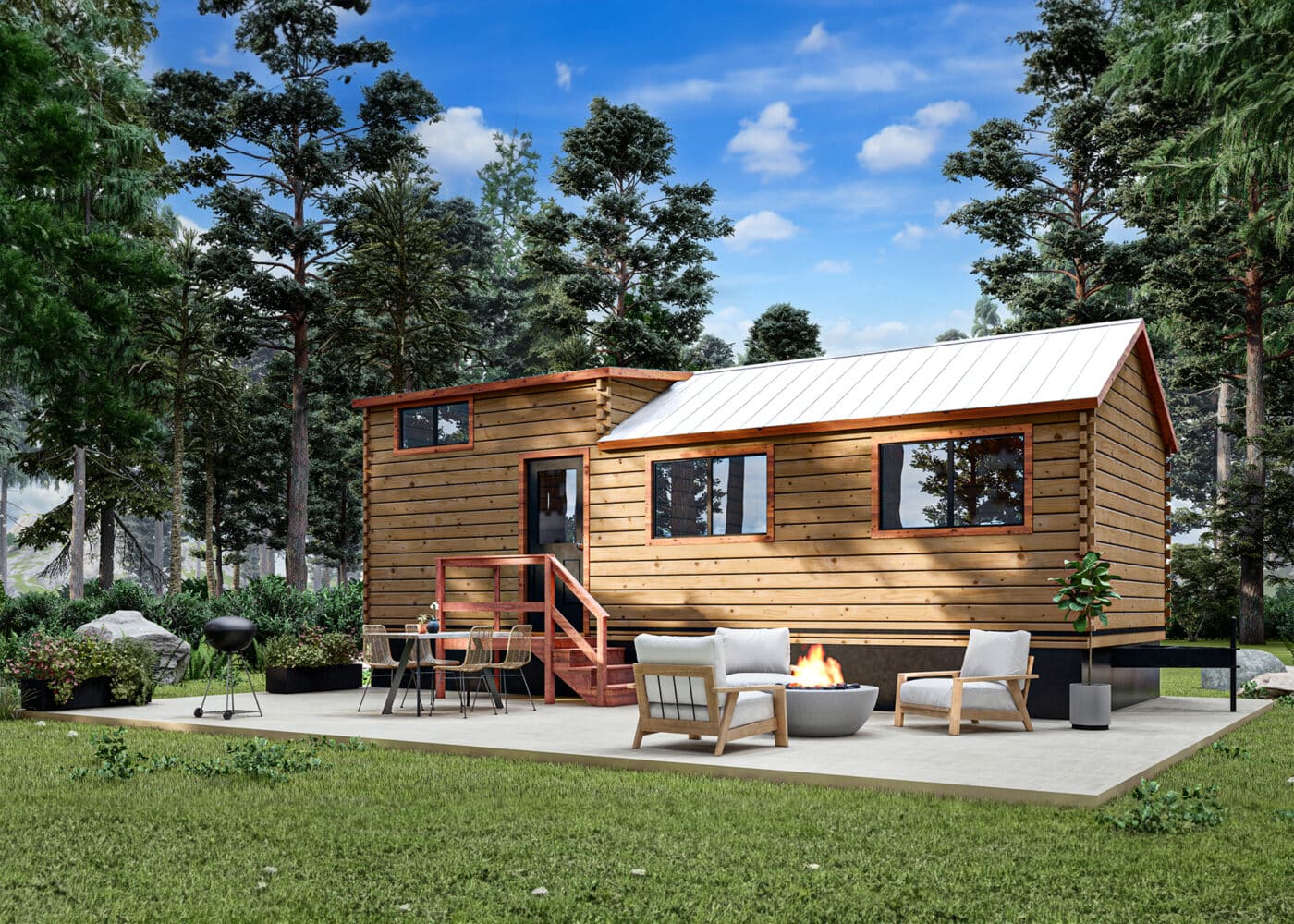
How Much Does it Cost to Build a Tiny House in AZ?
The exact cost varies depending on the size, area, plus land fees. Typically the price range for a tiny home is around $30,000 to $60,000. For more high end homes, the cost would be around $90,000 to $100,00. If you’d like a precise breakdown of the pricing, you can take a look at this article which offers a cost breakdown for one of our park models, or request a free quote on your tiny home!
Can A Park Model Tiny Homes Have Multiple Bedrooms and Bathrooms?
Yes they can! Park Model Homes can have multiple bedrooms and bathrooms. There are, however, some restrictions on the number of bedrooms and bathrooms because of space. After all, this home is usually about 400 square feet. Creative design solutions are needed to make them fit into that kind of square footage. At Zook Cabins we do offer multiple park model home styles with 2 bedrooms! For example take a look at the “Nook Family Park Model Home” or “The Cascade Park Model Home” both with 2 bedrooms & plenty of living space!
What Features Are Included In A Park Model Home From Zook Cabins?
Well, where do we even begin? Our park model homes are one of a kind, whether you’re looking for cozy & quaint rustic cabins, or more modern & luxurious cabins, we have you covered. We offer customization for each Park Model Home, so you can design it in a way that suits your needs & requirements! Our park model homes usually are between 395 and 400 sq. ft, and each home comes fully equipped with essential furnishings! Including light fixtures, hardware, faucets, mirrors, shelving, and more. Take a look inside our park model homes to see more!
How Small Does a House Have to be to be Considered a Tiny Home?
Usually tiny homes are not larger than 500 square feet. The typical range is between 120 square feet to 400 square feet. Arizona adheres to the International Building Code (IRC), which means a tiny home must have a minimum of 120 square feet.
What Is The Cheapest Place To Put A Tiny Home In Arizona?
That’s a bit of a hard question to answer, but that’s what we’re here for! Finding the cheapest place to put a tiny home in Arizona includes looking at land costs, availability of utilities, zoning regulations, and community amenities. When searching for the cheapest spot to put a tiny home in Arizona, one must consider land costs and the long-term costs of utilities, transportation, and services. Cheapest options are often found in rural areas and certain communities catering to tiny homes.
Is There A Minimum Size My Tiny Home Must Be In Arizona?
Yes there is a minimum size requirement. The tiny home must be at least 200 square feet in the state of Arizona & if it’s a tiny home on wheels such as a Park Model Home, the minimum is 160 square feet.
Are Park Model Tiny Homes A Good Investment?
Indeed they are! Many of our clients have rented their property. Currently the short-term rental market is going up & up, without a sign of stopping. There has never been a better time to invest in real estate. Many of our clients who we built homes for have been successful in renting their cabins on Airbnb and various other hosting sites! If you’re interested in the real estate market, take a look at how Bobby Lee and Andrew, they converted 11 Park Model houses into their perfect RV camp.
What are utility bills like in a tiny house?
Utility bills in a tiny house are generally much lower compared to traditional homes due to the smaller size and often more efficient use of resources. Usually people who own a tiny home say they pay no more than 50$ a month, as tiny homes are built to be energy efficient. Overall the utility bills in a tiny home are a fraction of the regular price in a traditional home, making it a great option for those looking to reduce expenses and live a sustainable lifestyle which helps the environment in the long run!
Is living in a tiny house comfortable and practical?
Tiny house living is both comfortable and practical for most people, but it really depends on the individual preferences, lifestyle and how the home is designed. With a thoughtfully designed home, you can make it work & live comfortably in a way that suits you. You should prioritize quality multi-use furnishings & storage for the best functionality.
What Do Other States Say about Tiny Living?
Every state has different guidelines for what is allowed for tiny living. Look at the table below to see what your state or the state you would like to move has to say about tiny living.
